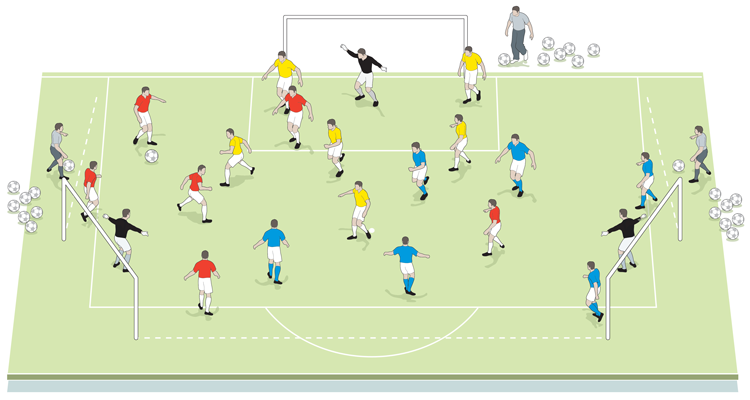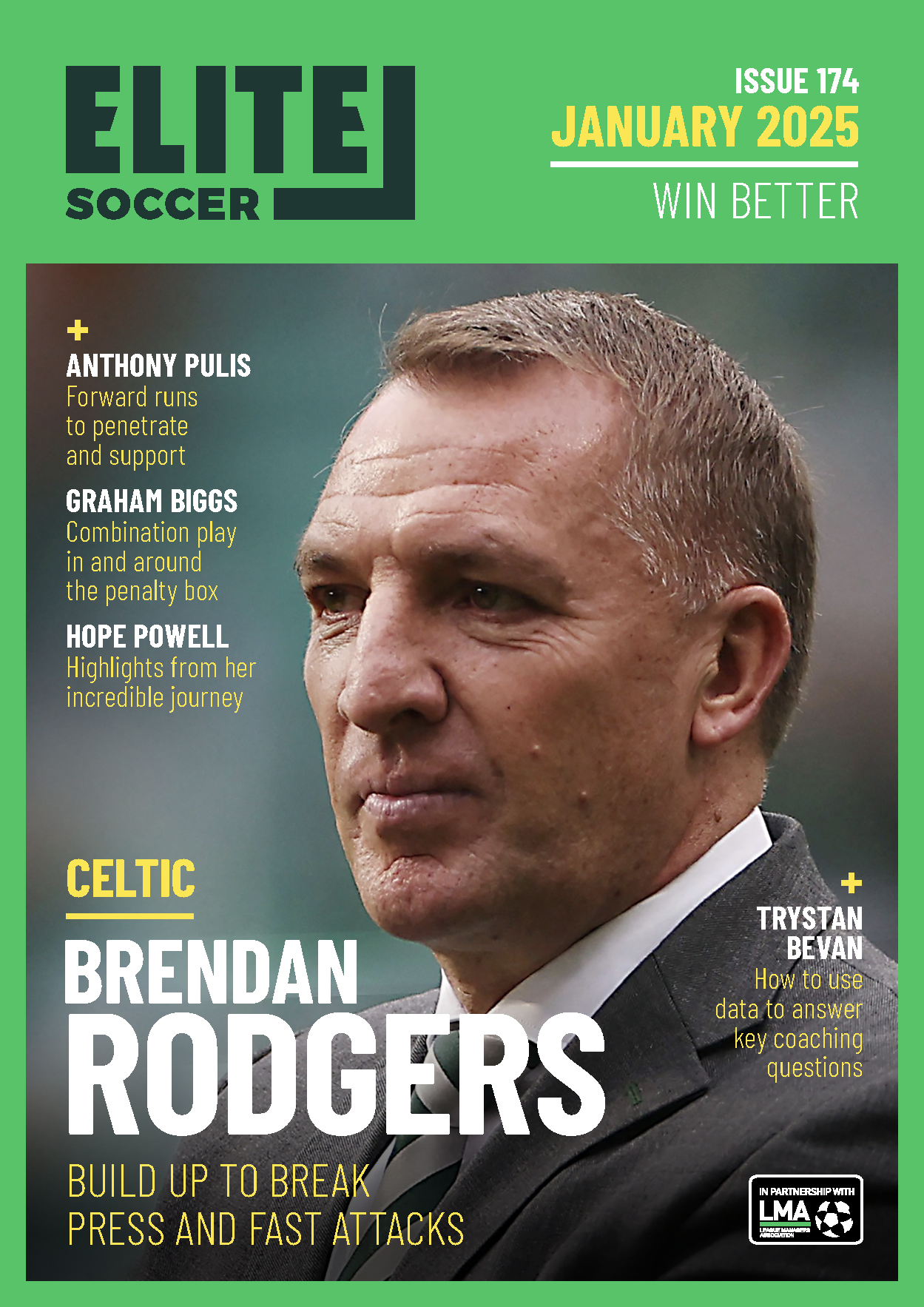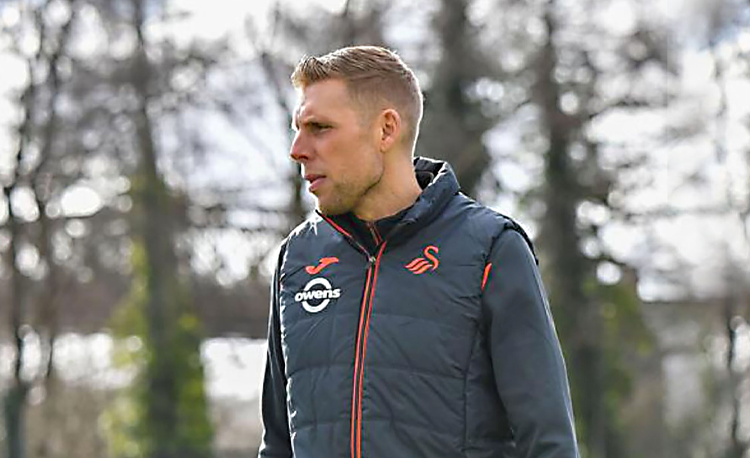You are viewing 1 of your 1 free articles
Reactions in the box
Work on improving penalty box anticipation and reactions, for both defensive and offensive players. This is crucially important because every game is decided by penalty box behaviour.
| Area | Use of half-pitch |
| Equipment | Balls, cones, goals |
| No. of Players | 21 |
| Session Time | 15mins |
This session is about improving penalty box anticipation and reactions, for both defensive and offensive players. Obviously this is crucially important because every game is decided by penalty box behaviour.
We will run this practice once per week – subject to periodisation of training – based on game-load. And it would be best to set this up the day before a game given that it combines low level physical demands with a requirement for high mental alertness.
Overall it’s a simple session and the premise is very much on the coaches to let natural game play develop, because really anything can happen in the course of players using the space. But what is certain is players will find it enjoyable, and it will put them in the right mindset for the challenges that follow on match day.
What do I get the players to do?
We set up as shown (1), using three goals positioned around a penalty box. It’s three teams of seven – six and a keeper in each – with the instruction of defending your own allocated goal whilst looking to score in either of the other two.
1

The nature of this set-up means players will have to be alert to many different threats and opportunities going on around them. We will also point out ‘anticipation areas’ – for instance back-post positions and the centre of the penalty area, where key match events will develop.
We run this for three periods of 5mins, each time changing the goal to be defended so that, after three phases, each team has rotated around the area and we reach an accumulated score.
What are the key things to look out for?
We are looking for players to display excellent reactions based on their positions. For offensive players this must involve being courageous and able to work quick technical adjustment to opportunities, preferably one-touch. For defensive players, we want to see solid defensive blocks and protection of the keeper.
Poor or slow mental reactions are ultimately what will cost teams goals, or prevent them from taking the chances that come their way, while being able to execute technical tasks under pressure is also a must if players are to fulfil the potential that this multi-angled practice offers.
How do I progress the session?
A simple progression is to transfer the practice into small directional games in penalty box-sized areas, with players taking forward the idea of threats and opportunities being present all around them.
Related Files
More like this
Editor's Picks
Using the goalkeeper in build-up play
Pressing principles
Intensive boxes drill with goals
Penetrating the final third
Creating and finishing
My philosophy
Pressing initiation
Compact team movement
Defensive organisation
Coaches' Testimonials

Alan Pardew

Arsène Wenger

Brendan Rodgers

Carlos Carvalhal

José Mourinho

Jürgen Klopp

Pep Guardiola

Roy Hodgson

Sir Alex Ferguson

Steven Gerrard
Coaches' Testimonials

Gerald Kearney, Downtown Las Vegas Soccer Club

Paul Butler, Florida, USA

Rick Shields, Springboro, USA

Tony Green, Pierrefonds Titans, Quebec, Canada
Join the world's leading coaches and managers and discover for yourself one of the best kept secrets in coaching. No other training tool on the planet is written or read by the calibre of names you’ll find in Elite Soccer.
In a recent survey 92% of subscribers said Elite Soccer makes them more confident, 89% said it makes them a more effective coach and 91% said it makes them more inspired.
Get Monthly Inspiration
All the latest techniques and approaches
Since 2010 Elite Soccer has given subscribers exclusive insight into the training ground practices of the world’s best coaches. Published in partnership with the League Managers Association we have unparalleled access to the leading lights in the English leagues, as well as a host of international managers.
Elite Soccer exclusively features sessions written by the coaches themselves. There are no observed sessions and no sessions “in the style of”, just first-hand advice delivered direct to you from the coach.









